#perhaps the greatest show to ever grace network television...
Explore tagged Tumblr posts
Text







#perhaps the greatest show to ever grace network television...#boston legal#alan shore#james spader#denny crane#william shatner#*
7 notes
·
View notes
Text
The Bear Roots of Burbank Cartoons: A Lookback at Boo Boo Runs Wild
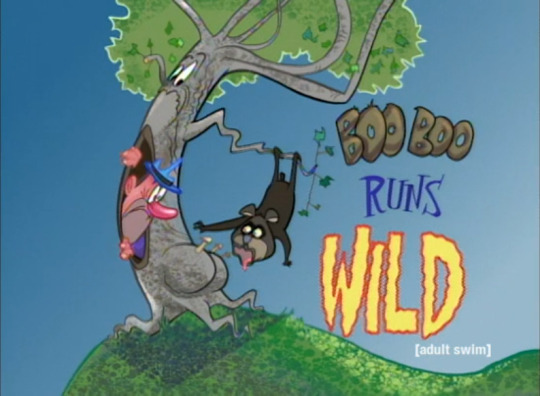
5 years ago, [adult swim] aired the greatest of all Yogi Bear / Ranger Smith episodes, “Boo Boo Runs Wild” (1999), on August 13th, 2016 A.D. at 4 AM.
Look and see, kids, how America’s not-so-average bear connects in the wide world of animation that produces many of the cartoons that you love in Burbank, Canada and more!
As and after I saw it, I knew that I found the greatest band of cartoonists out there, and that greatest band of cartoonists out there was none other than...
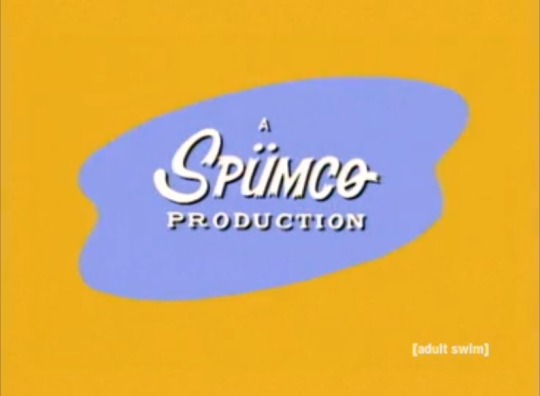
Spümcø, whose many creatives would end up working at Hanna-Barbera Cartoons, Cartoon Network Studios, and many other popular Burbank and Canadian studios that made the cartoons I grew up and beyond watching.
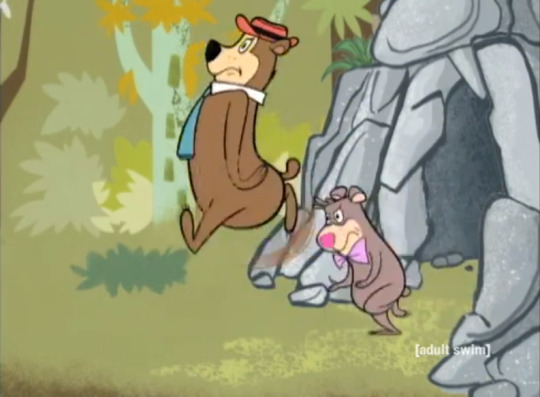
Obviously, the character design is rather different, but they still look like the right characters, even with the slight color changes...
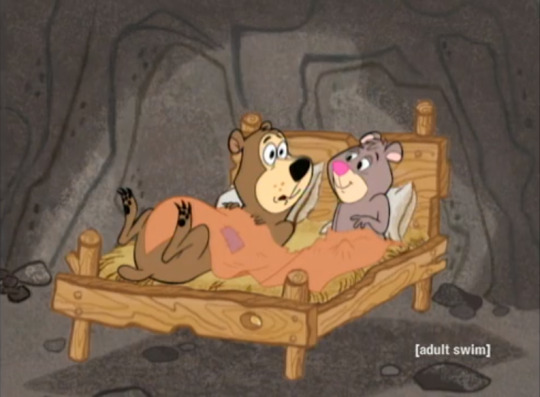
and with their items of human attire out. Ranger Smith, on the other hand...
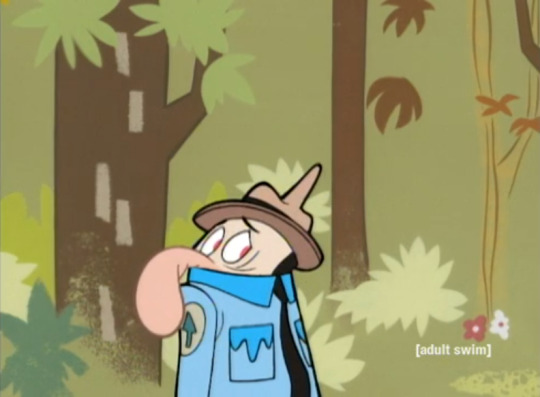
Ranger Smith is wildly off model, and probably on purpose, throughout the picture.
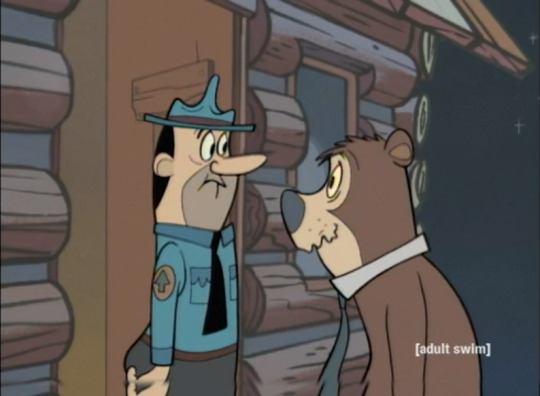
Only in one scene appears he with a more familiar face.
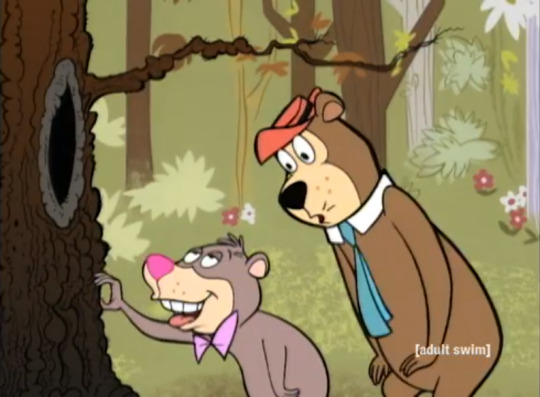
Now, I didn’t have to watch Wild Kratts (which, by the way, features 6 Spümcø Canada creatives) to learn that “there’s only one thing a bear likes more than raiding a pic-a-nic basket.”
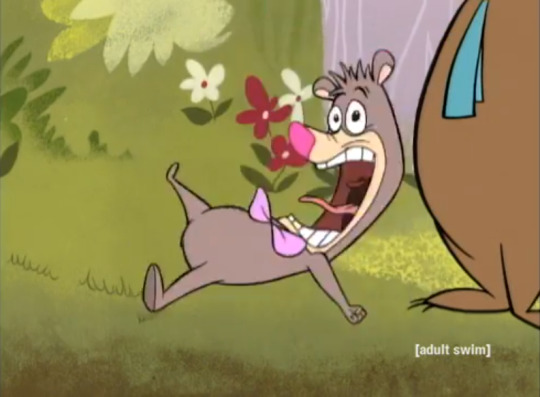
As the title suggests, Boo Boo loses his temper when Ranger Smith restricts him from tearing bark and decides to go primal in returning to his bear roots: “From this day forth, I’ll not dress in the man’s attire, and I’ll not speak in the man’s tongue. From now on, it’s going on all fours and grunting for me!”

Boo Boo wreaks havoc for the trees with his natural bear roots.
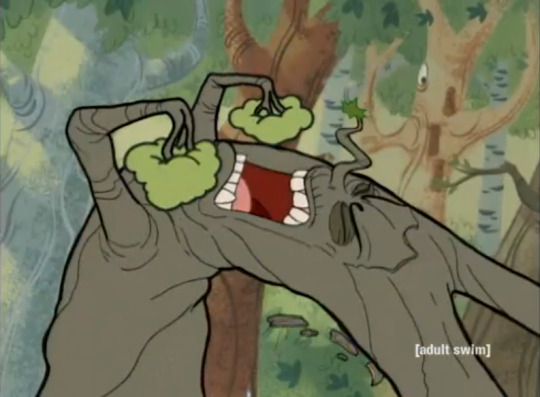
Unlike past episodes, however, the artists went far wilder than the usual Hanna-Barbera cartoon, making the trees alive and screaming in pain! OH, WHAT TOURTUE! Not to mention how I love Boo Boo’s goofy/manical laugh, a beautiful product of John Kricfalusi’s voice (Yes; I know that he was a formerly abusive megalomaniac who still has ADHD, but God knows what cartoons would be like today—at least those produced in Burbank and Canada—if it wasn’t for the many layout artists that he led).
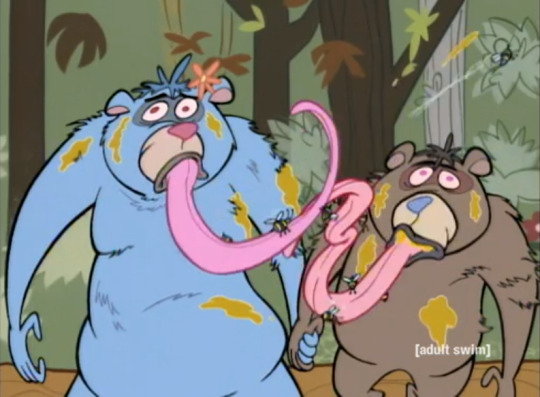
Also unnatural to a Hanna-Barbera cartoon is the extreme levels of slapstick, wackiness and graphic nature of cartoons since such shows as Mighty Mouse: The New Adventures, Beany and Cecil’s DiC reboot, and The Ren & Stimpy Show. Boo Boo and now Cindy Bear are licking away at all of the honey... and bees... with insanely long tongues (may be that they’re sloth bears?). This left Yogi Bear practically speechless.

The mere sequence of dialogue between Yogi and Ranger Smith, discussing what to do about Boo Boo, involved HEAVY work in the storyboards by Vincent Waller. So many expressions that they couldn’t fit in each of Spümcø’s 3-panel storyboard pages!

As you see, in addition to Vincent Waller’s storyboards, John K. added extra poses (storyboard revisions more or less, but definitely layout poses) under the respective scenes. That way, Vincent could focus on telling and writing the story in rough pictures. (source of storyboards)

I also love the sound design. While it’s definitely true to a Hanna-Barbera cartoon, John K. and the late Henry Porch were very creative with some weird, dated and out-of-context sound effects, similar to what they and Horta Editorial did on The Ren & Stimpy Show in the first two seasons. The production music (probably APM and Capitol Records) also gave it a vintage, nostalgic feel.
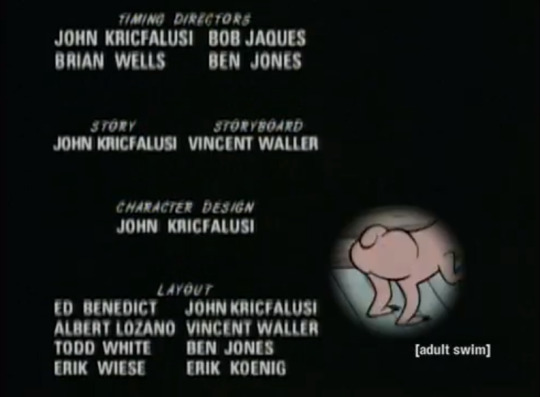
Ultimately, with the aforementioned abusive megalomaniac aside, Spümcø undoubtedly harbored some of the finest animators and artists ever. Such names as Bob Jaques (Spongebob Squarepants, Buy One, Get One Free*, The Baby Huey Show), Ben Jones (DC Super Hero Girls, Cats Don’t Dance, Teen Titans GO!), Vincent Waller (Spongebob Squarepants, Adventures of Sonic the Hedgehog), Albert Lozano (Inside Out, A Kitty Bobo Show), Todd White (Spongebob Squarepants), Eric Koenig (Atlantis: The Lost Empire, Madagascar, Cats Don’t Dance, The Simpsons, and The Tigger Movie), and Erik Wiese (Samurai Jack, The Mighty B!) are among the hundreds of creatives who ended up almost everywhere working in Burbank and Canadian animation.
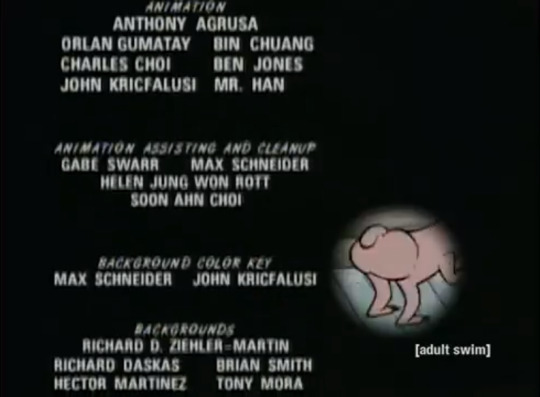
Other names on the Spümcø team that one might recognize include Gabe Swarr (Dexter’s Laboratory, The Buzz on Maggie, Foe Paws, El Tigre), and even background artists such as Richard Daskas ( @rdaskas - Samurai Jack, Time Squad, Sym-Bionic Titan, Batman Beyond), Richard Ziehler-Martin (Tiny Toon Adventures, The Wacky World of Tex Avery), Hector Martinez (Tom and Jerry: Robin Hood and His Merry Mouse, Timone and Pumba, Captain N, Evil Con Carne, Dora the Explorer), and Tony Mora (MAD, Teen Titans GO! to the Movies, Pickle and Peanut). I mean: in short, these artists worked for Warner Bros. Animation, Disney Television Animation and Walt Disney Feature Animation, Nickelodeon, and Cartoon Network Studios!
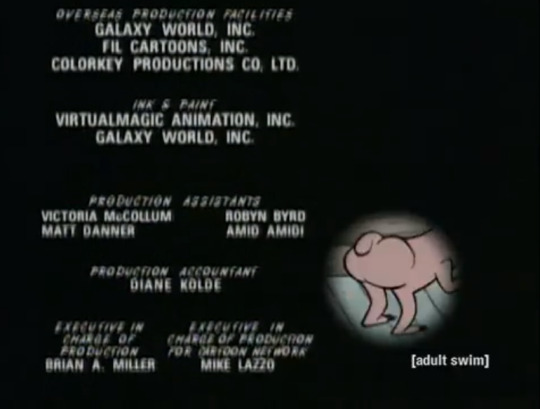
Spümcø’s production assistants on Boo Boo Runs Wild feature Matt Danner —a fantastic character designer, storyboard artists, director and producer, whose credits range from (Johnny Test and The Legend of the Three Caballeros to Team Hot Wheels and The Looney Tunes Show—and Cartoon Brew editor Amid Amidi. Brian A. Miller was an executive in charge of production, not for but probably in association with Cartoon Network.

Spümcø’s creatives, as I said, are all over the place in Burbank animation. Other shows that still air on @adultswim have ex-Spümcø creatives. For example: today’s re-run of Samurai Jack EPISODE XVI features Chris Reccardi (The Powerpuff Girls, The Grim Adventures of Billy & Mandy)...
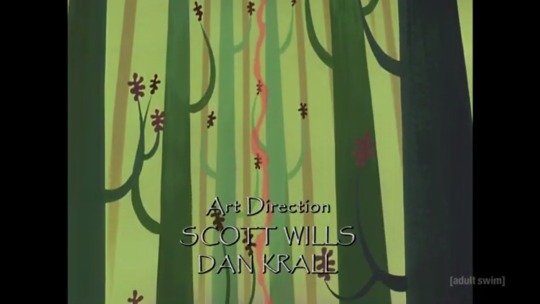
Scott Wills (Genndy Tartakovsky’s Primal, The Twisted Tales of Felix the Cat)...
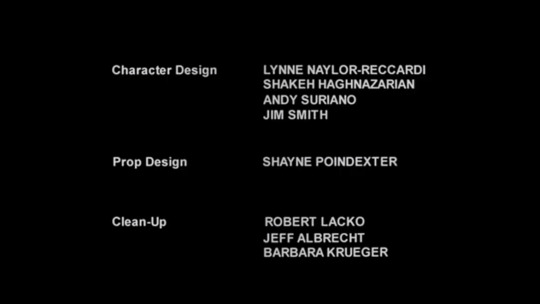
Lynne Naylor-Reccardi (The Shnookums and Meat Funny Cartoon Show, Wander Over Yonder) and Jim Smith (YooHoo and Friends, Tom and Jerry Tales, McGee and Me)...
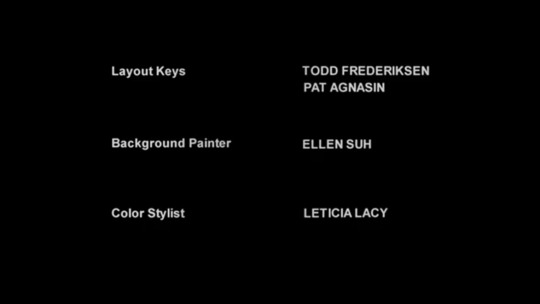
and Leticia Lacy (TRON: Uprising, Sym-Bionic Titan, Wander Over Yonder, Korgoth of Barbaria).

Even outside of Cartoon Network Studios, where most ex-Spümcø artists end up, @cartoonnetwork’s The Amazing World of Gumball, from Cartoon Network Studios Europe (AKA Hanna-Barbera Studios Europe), features ex-Spümcø artist Charlie Bean (The Powerpuff Girls, Robotboy, Batman: The Animated Series, Timone and Pumba, Creature Crunch) on The Cartoon Network Europe Development Team.

One of Cartoon Network’s biggest and craziest hits, Teen Titans GO!, also features such ex-Spümcø artists as storyboard artist, director and producer Luke Cormican (The Buzz on Maggie, Brandy and Mr. Whiskers, Brickleberry, The Replacements, El Tigre)...
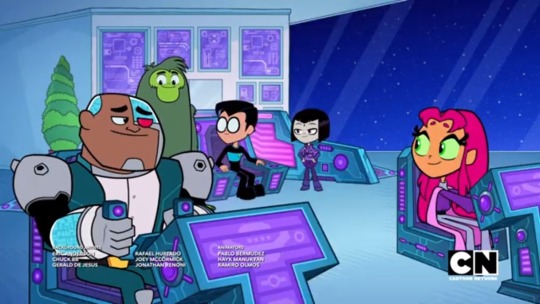
Gerald de Jesus (The Book of Life, The Ricky Gervais Show, TMNT)...

and Eric J. Pringle (Fosters’ Home for Imaginary Friends, The Problem Solverz). What wacky cartoon filled with live-action images, unpredictable visual gags and extreme slapstick humor wouldn’t?
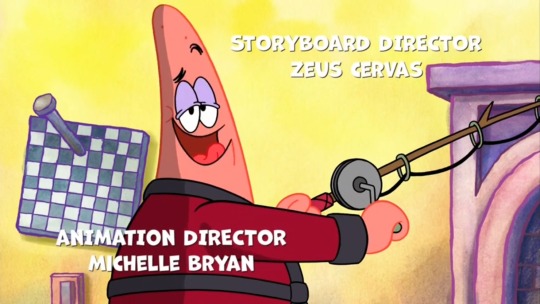
Relatively, you could even tune in to Nickelodeon, the original home of Spümcø’s ground-breaking hit, The Ren & Stimpy Show, and see names of creatives associated with Spümcø and Ren & Stimpy, such as Zeus Cervas (Star vs. the Forces of Evil, Spongebob Squarepants, Clarence) on today’s episode of The Patrick Star Show...

or even Gabe Del Valle (Mighty Magiswords, Spongebob Squarepants) on today’s episode of Middlemost Post!
Overall, Boo Boo Runs Wild introduced me to the cartoon studio whose works I took for granted and on which I was missing out all of my life, and I strongly encourage this generation to support this Yogi Bear / Ranger Smith episode, which you can watch RIGHT NOW on [adult swim]’s site. It was officially on their YouTube channel, but it was removed for unknown reasons. This short never even got a DVD or VHS release!
The last televised airing of Boo Boo Runs Wild on [adult swim] so far was January 6th, 2019 A.D., but Spümcø also produced “A Day in the Life of Ranger Smith” and “Boo Boo and the Man” (based on true events in the life of John Kricfalsui) for Cartoon Network.
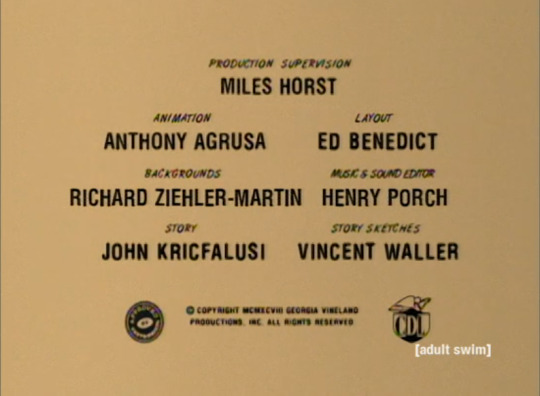
As I come to a close, it’s worth noting that layout Ed Benedict, an animator and artist whose credits go all of the way back to the 1930s with Disney and continued with MGM and Hanna-Barbera/Cartoon Network Studios, originally worked on Yogi Bear episode “Yogi’s Birthday Party” as a layout artist, and reprised that very role for “Boo Boo Runs Wild”. What a legacy the animators and artists of this episode leave!
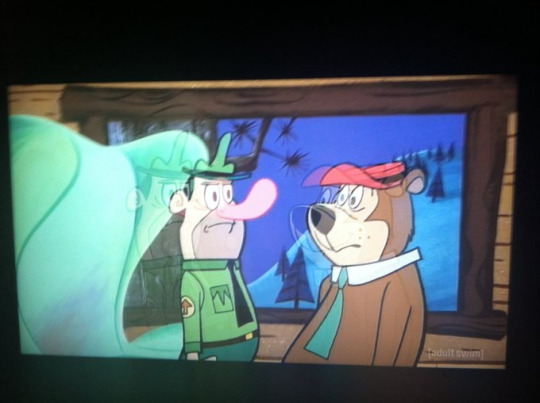
Always will I remember how Spümcø, whose legacy connects to my Cartoon Network-infused childhood, blessed me and graced me that fateful day, August 13th, 2016 A.D., with the ultimate example of the fine art of cartooning that is the Yogi Bear / Ranger Smith episode “Boo Boo Runs Wild”. I was living in the moment, and I thank God for it.
“For years they have [been] asking me to make new Yogi cartoons, but I can’t even get a half a million [dollars] to make one, probably because I actually like the characters, but 60-70 million $ to make walking corpses is economical.” - John Kricfalsui on Yogi Bear (2010)
Another Ranger Smith, Boo Boo or Yogi Bear cartoon from the people behind The Ren & Stimpy Show is highly unlikely today, due to the abuse and harassment of John K. angering the world to the point of hating and condemning the man who helped to shape not only Cartoon Network but also television animation—and animation as a whole—with an undeniable legacy of artists and animators who deserve way more credit and respect than we perhaps thought of giving as kids.
Tweet version of this post here.
#boo boo runs wild#yogi bear#spümcø#spumco#cartoon network#adult swim#[as]#[adult swim]#ranger smith#vincent waller#john kricfalusi#john k#john k.#matt danner#ben jones#bob jaques#albert lozano#todd white#eric koenig#erik wiese#cartoon#cartoons#hanna-barbera cartoons#hanna barbera cartoons#tony mora#richard daskas#hector martinez#gabe swarr#ed benedict#boo boo
29 notes
·
View notes
Text
Truth

Following the release of Truth in 2015, Dan Rather - who is portrayed by Robert Redford in the film - was asked what he thought about the film and its accuracy. In his response, he stated that, "I think it's the best thing that's ever been up on the big screen about how television news really works." Considering the film pauses every few minutes to wax nostalgic about Rather, his ability as a reporter starting way back in the 1960s, the glory days of journalism, and how Rather was a beacon of light in the changing times for journalism, it is not hard to believe that Rather himself would like the film. Of course, this quote and given the context of the film itself actually manages to touch on what makes Truth go so awry. Based on a non-fiction book written by Mary Mapes - who is portrayed by Cate Blanchett - the film explores CBS News and 60 Minutes' reporting on the Killian documents that seemed to discredit George W. Bush's service in the National Guard. As the book is by Mapes and the story is about Mapes and how she and her team were misled on a story, it is not hard to imagine this film as bein unwilling to criticize either her or her team. Unfortunately, that is exactly what happens and the film suffers for this "kid gloves" approach to its protagonists and their takes on the direction of journalism. A mixed bag, Truth is a film that has all of the makings of a great journalism film, but none of the follow through.
As a result, it is hard to not see Truth's greatest issue as being its source material. As it is written by Mapes who idolized Rather and, obviously, stands by her reporting, the film approaches both with no venom whatsoever. Instead, let's both of the hook - especially Mapes and her team - for accepting obvious copies as the real documents and forcing out a story that had some good reporting behind it, but was probably a few confirmations away from being good to go. Even then, once it was discredited and retracted, it is hard to stand by that reporting as being done in furtherance of a truly accurate story. Yet, the film seems to not understand that Mapes and her team got it wrong. Defiant in its denial, Truth seems unaware of the fact the memos were forgeries or that the team was entirely misled by their sources. While the story the film tells about the reporting behind the Killian documents story is compelling, it is hard to see this as a definitive telling of that story. Rather, it feels like Mapes making her case that she was actually in the right due to some perceived journalistic duty to report the story.

Unfortunately, this ultimately gives way to conspiracy theories. Though her closing speech about the current state of journalism review by the public being that of nit-picking, yelling, and smear tactics, may make some strong - though heavy-handed - points, it nonetheless screams of hypocrisy. Arguing that people base their opinions on a select few facts that only serve to further their own point - which she is right about - Truth falls into the same trap. In a monologue for reporter Mike Smith (Topher Grace), he argues that CBS News is only pulling the story due to pressure from the White House, who had previously done Viacom a deal to ensure they could keep all of their current affiliates. Citing this apparent relationship as the reason why the story gets squashed, the film also focuses in on the political leanings of the men tasked with investigating Mapes and her reporting, naming one individual as a former Attorney under Bush Sr. and a friend of the Bush family. While certainly biased, the film seems to be lining up its cards to position this as a Conservative conspiracy to discredit Mary Mapes and her work when, in reality, SHE GOT THE STORY WRONG. It was wrong. Bottom line. At best, the film comes off as delusional for seemingly not understanding that the story reported by 60 Minutes was wrong. Though it accuses people of shouting to obfuscate points made by those they disagree with or focusing on conspiracy theories about the opposing side, the film falls into the same traps and points the finger at some shady dealings between Viacom and the government. Whether or not they are right that Bush and Viacom were close friends, it does nothing to change the point that the document that is used to base the entire story around is hardly the most trustworthy document in written history. There may be ulterior motives, who knows, but the film does nothing but point fingers and yell about it, while failing to actually offer any evidence that it is true.

Where the film perhaps errs the most is in the handling of Mary Mapes' back story. Forcing in elements about how her father used to beat her for asking questions, but how she would refuse to ever give him the satisfaction of crying or asking him to stop, Truth uncomfortably draws parallels between that abuse and her treatment by ABC News. As her story is examined by ABC News, there are lines of dialogue regarding how she is being hit for just asking questions, which is exactly how her abuse that she suffered is described. Later, when her father appears on ABC News to discredit her - if this did happen, then ABC News did commit a major mistake as well, to be fair - the parallel is finalized as Truth shows those who attack her story as essentially beating her like her father. Making her immune to counter-arguments or criticism for getting the story wrong, Truth tries to insulate its protagonist and show her as a woman who did her best and, if the story was wrong, it was not her fault for asking questions. In the process, it damns ABC News reporters for asking questions and being similarly misled by untrustworthy sources in their examination. The film wants to be have to Mary as a crusader for journalism and paint all those who oppose her as being in the way of good stories. Unfortunately, to do so, it is wholly hypocritical and, in creating a parallel between criticism and her being abused, deeply uncomfortable and inappropriate.
While the may wear its biases on its sleeves and director James Vanderbilt certainly uses it as a platform to blast fake news, infotainment, and corruption between the news media and the government, Truth is a film with an undeniably incredible story. As a film about journalists doing their job and bringing a story from the ground up, the film shows how easy it is to be misled, no matter how much work was put into the story. Displaying the various steps taken for verification, the process of getting a show on the air, and the feeling that a story must be pushed forth to beat other news networks, Truth is a film that may not be entirely truthful about its participants, but offers and honest and engrossing look at journalism and, in particular, how the Killian documents controversy came to fruition. The film may wax nostalgic a bit too much and heavy-handed in its politics, but it is a powerful and gripping tale about journalism and the lengths that reporters go in investigating a story.

Truth is a film that is additionally bolstered by its fantastic cast, even down to small turns from actors such as Stacy Leach as the sickly source of the story or Bruce Greenwood as the President of CBS News. As Dan Rather, Robert Redford is stoic, confident, and gives off that magnanimous feeling that made Rather a man who millions would spend time with every evening and trust. He has a warm honesty about him in this portrayal that makes it easy to see why Rather became a man so revered in journalism. Though the film may resort to patting Rather on the back a bit too much, it often demonstrates why it would do so by showing him to be a man with a burning passion for news that really shines through in his own reporting. As a result, Redford demonstrates that great actors never lose their ability with a typically excellent turn from the legend and one that gives the film great presence. As its protagonist Mary Mapes, Cate Blanchett shines. Passionate, forceful, and determined, Blanchett's excellent delivery of her closing monologue, her selling of Mapes' emotional issues with her father, and the earnest nature of her interactions with Redford/Rather, allow Mapes to become a truly well-rounded character. It is a performance with a lot of emotional resonance that breathes life into the film. This is a role that really allowed Blanchett to sink her teeth into it and she took the opportunity and ran with it, delivering a powerful turn that really saves the film from being anything less than average.
Seemingly unaware of the truth behind its own true story, Truth is a film maligned by its own source material. A great cast and a strong portrayal of news work cannot save the film from shying away from criticizing Mary Mapes or her story, as the book the film is based on was written by Mapes herself. Squeamish in how it glosses conveniently over anything that would make Mapes look bad, while painting those who criticized as her in a deeply negative light, Truth is a film that seems more akin to Mapes trying to clear her name and point blame for her errors than it is an examination of the controversy. Fortunately, if taken with a huge grain of salt, Truth's passionate telling of its true story and an equally strong cast allow the film to somewhat hit the mark, even if it is deeply flawed.
#2015 movies#2010s movies#truth#truth movie#james vanderbilt#robert redford#cate blanchett#topher grace#bruce greenwood#dennis quaid#stacy leach#elisabeth moss
1 note
·
View note
Text
The 12 Days of Fieri: Guy Out of Bounds
While the vast majority of Guy Fieri’s television career has been food focused, sometimes he takes his on-camera work — ahem — totally out of bounds and cruises his muscle-car personality into other realms of entertainment. And on this, the sixth day of The 12 Days of Guy Fieri, it’s time to take a fond look back at Guy’s notable TV and movie cameos.
You know the Mayor of Flavortown is a car obsessive, right? Just look at that sweet ride that appears at the beginning of each Diners, Drive-Ins and Dives episode. That’s a ’68 Camaro, an original American hot rod. Boasting such a fine automobile, it’s no wonder Fieri received an invite to appear on Jay Leno’s Garage earlier this year. The comedian and former late-night host is an auto enthusiast himself, and these days he spends his time on television chatting and driving with like-minded celebrities. Fieri shocked Leno with a vehicle that was inspired by his supermarket game show, Guy’s Grocery Games: a giant, turbo-charged shopping cart.
Perhaps the most famous show on which Fieri has appeared was The Price Is Right, which was graced with his presence in 2010. (He was not one of the screaming competitors, instead introducing a signature kitchen showcase and a giveaway for a trip to the Bay Area and dinner at Johnny Garlic’s.) Fieri has tested his acting chops in some scripted work as well. He made a brief appearance in 2014’s The Interview, the notorious Seth Rogen-James Franco flick about a television interview with North Korean dictator Kim Jong-un. And in 2008, the Oakleys aficionado lent his voice to the animated children’s series Phineas and Ferb, playing a character known as “Pizza Guy” in one episode.

YouTube/I Am Evel Knievel
Fieri has also dabbled in the world of documentary films. Last year, he showed up in Red Til I’m Dead: Sammy Hagar’s Rock-N-Roll Birthday Bash, which chronicles the former Van Halen frontman’s 70th birthday party. In I Am Evel Knievel, a 2014 biography of the famous stuntman, Fieri appeared alongside the likes of Matthew McConaughey and Kid Rock to gush about Knievel’s daredevil skills. “The guy knew no boundary,” he says, sporting some very Guy Fieri dirtbike garb in this trailer. “He only knew ‘go big or go home,’ and the dude never went home.”
All of these television and movie spots are nice, but they don’t hold a candle to Fieri’s greatest achievement on screen. In July, Discovery aired his very own Shark Week special. Just look at the explanation from Eater’s previous coverage of the show:
Guy Fieri’s new special for Discovery’s Shark Week begins with the celebrity chef and his son, Hunter, standing on the prow of a ship called the U.S.S. Flavortown with shark-bait bazookas in their hands aimed at the water — and that’s just the tip of the iceberg for this truly gonzo hour of television.
More than Triple D, Guys Grocery Games, or anything else, Guy’s Feeding Frenzy is the most Guy Fieri thing to ever be broadcast on a cable network.
Eat, Drink, Watch.
Food entertainment news and streaming recommendations every Friday
By signing up, you agree to our Privacy Policy and European users agree to the data transfer policy.
Source: https://www.eater.com/2018/12/13/18139745/guy-fieri-phineas-and-ferb

0 notes
Text
Before Their Time: Invader Zim
In the annals of imaginary planetary invasions, few can claim to be more charming or more addictively bizarre than Invader Zim.
Conventional wisdom says we’re living in a Golden Age of Television. And the conventional wisdom isn’t wrong. But if (sigh) you’re my age, you remember another golden age. While not as fraught and heavily serialized as shows like The Walking Dead, Breaking Bad, or Game of Thrones, the best shows of this era enjoyed their own kind of sophistication, as creators felt emboldened and inspired to experiment, pushing the limits of their medium. I’m speaking, of course, of the golden age of animated television, that sweet spot in the 1990s and early 2000s when animators emboldened by how much The Simpsons seemed to be getting away with – on network prime time, no less! – felt inspired to test the limits of their medium, and network executives hoping to cash in on a similarly “edgy” craze felt inclined to let them. This convergence produced shows that still hold up today, and while their humor may not be as brash as adult animation like Archer or The Venture Bros., it’s that much more impressive for its ability to subvert and evade kid’s show censors. One of the most notable examples of this genre is of course Batman: The Animated Series, whose Art Deco Gothic aesthetic and heavy themes opened the door to animated shows that weren’t just for kids anymore.
Cable wasn’t about to let network TV have all the fun, and Nickelodeon introduced its own animated shows. In the early aughts, as the censors began to catch on to choking the chicken jokes, the subversive animation boom began to wind down, sanding down some of the harder edges that had snuck past in shows like Rocko’s Modern Life and The Tick. One of the last shows to benefit from – and suffer through the end of – this confluence of funding, fandom, and executive inattention was Invader Zim.
Invader Zim is just what it sounds like on the tin: a show about an alien’s attempts to take over Earth. Zim is a little green member of a race known as the Irkens, whose raison d’etre is the invasion, domination, and assimilation of other planets. Their MO is pretty straightforward – arrive incognito, camouflage yourself as a local until you’ve gathered enough intel to conquer the whole planet, and then WHAMMO! Instant world domination. Zim, our titular Invader, shares his compatriots’ zeal for dominance but leaves something rather to be desired in the competence department. After he jumps the gun (er, mecha-destroyer) on an Important Invasion (by accidentally invading his own planet), Zim’s superiors bust him down to invading a planet far out in the uncharted backwaters of the unfashionable end of the western spiral arm of the Galaxy armed with only a standard invader ship and a malfunctioning android helper named GIR.
After their noisy arrival to a decrepit Earth goes unnoticed by its dispirited populace, Zim builds a very approximate facsimile of a typical Earthling’s home and fits GIR and himself with Earth-appropriate disguises. Disguised as a manic green boy with a hairstyle that might have been procured from a distorted photo of Elvis or a 50s Impala, Zim enrolls in the local school (AKA The Skool) and begins reconnaissance of what he imagines will be a quick and spectacular trip back into the Irken leaders’ good graces. GIR’s cover is less a disguise than a revelation: It’s impossible to watch him zipping around in that stuffed dog outfit, a green to match his master’s, without wondering whether the delightful creatures we call dogs aren’t just all lazily programmed alien joy and eating machines.
However, no sooner has Zim embarked on his plan than he discovers Earth has more protective mechanisms than he bargained for, and perhaps even more than some of the planets who might have been expecting an Irken invasion. For one thing, the populace’s general refusal to acknowledge any strangeness they can’t process both insulates Zim against discovery and thwarts his plans. For another, one of Zim’s classmates is an aspiring paranormal investigator named Dib, who twigs immediately to Zim’s alienness. Adults and peers alike shrug off Dib’s repeated attempts to out Zim, and the general populace’s indifference alternatively thwarts and protects each of them. The truth is, Dib is not very convincing and Zim is not very good at invading, and the two square off in a series of zany gambits that never quite succeed at outing Zim or taking over the planet.
Zim’s not helped by the fact that his ostensible wingman is less interested in invading Earth than in eating all of its finest junk food and watching as much TV as possible. GIR’s obsessions with tacos and TV afford the show opportunities to lampoon the absurdities and kitsch of TV pop culture and the horror and irresistible allure of fast food. His bottomless appetite also makes him the most charming character on the show, a sort of manic K-9 who has gleefully discovered the canine homeworld.
It’s hard to say what made Invader Zim such a cult favorite, but after GIR and his antics, my favorite part of the show were the space battles and the zingers, especially those winks to the drudgery of adult life. With its protagonist a newcomer to Earth, Zim has to learn mundane rituals like riding the bus (“You expect me to pay to ride this filthy machine? Have you the brain worms?!”) to navigating Parent-Teacher Night at school (“Oh, I will bring my "parents", and they shall be the greatest, most parental parents EVER!”). Even more enjoyable than those are the occasions when Zim must jockey with other races for control of the planet, during which the show takes the opportunity to animate surprisingly riveting spaceship battles. Although the reasons for its premature cancellation are the subject of spirited speculation even today, I wouldn’t be surprised if Nickelodeon eventually balked at the cost of animating meticulously choreographed dogfights and airborne gags.
Invader Zim ran for about a year before Nickelodeon cancelled it in the middle of its second season. The Internet houses some spirited speculation, mostly over possible creative differences between the show’s creator and Nickelodeon’s producers. Without getting too far into the weeds, it seems safe to say Invader Zim succumbed, as so many shows do, to that fatal intersection of unsatisfactory ratings and budgetary quibbles. One blogger has argued, plausibly, that Nickelodeon and Jhonen Vasquez was always a doomed marriage, with the latter’s style tending to a humor too dark for the network’s tastes and desired demographic.
Inspired by the show’s cult following, Nickelodeon has belatedly realized their mistake. In April they announced that the gang – including Vasquez and the original voice cast – was getting back together for an animated movie. The Zim faithful can enjoy one more story about Zim.
It’s hard to say what attracted such a loyal following, but Zim united bizarre storylines and juvenile gags with a dark and almost existential sense of humor. Much like The Venture Bros., Invader Zim is a show about delusion and failure, about what happens when outsize ambition runs up against limited ability. If current events have taught me anything, it’s that the story of incompetence running up against ambition remains relevant. With any luck, this movie will give Invader Zim the fresh push into visibility it deserves, and the show can finally take its rightful place alongside The Venture Bros. and Silicon Valley, a timely monument to the hilarity and inevitability of failure.
4 notes
·
View notes
Text
Chip and Joanna Gaines returning to TV
When Chip and Joanna Gaines began remodeling homes, they had no idea that God would turn their business into a global witness. Their television show became the most-watched series in the history of HGTV, with an estimated audience of twenty-five million viewers.
Chip and Joanna left their show to have a fifth child and take time off for their family. But they announced last Friday on The Tonight Show with Jimmy Fallon that they are about to return to television. Discovery has confirmed that it is in exclusive talks to create a lifestyle-focused media network for the couple. Consistent with their Christian faith, the Gaineses hope “to build a different kind of platform for unique, inspiring and family-friendly content.”
Our culture needs such content more than ever.
When Billy and Ruth Graham received the Congressional Gold Medal in 1996, Dr. Graham told an assembly of our nation’s most powerful leaders: “You know the problems as well as I do–crime and violence, children taking weapons to school, broken families, drugs, teenage pregnancy, and corruption. The list is almost endless. We have confused liberty with license, and we are paying the awful price.”
In the two decades since, has our culture moved closer to God or further from him?
An advisor to twelve presidents
Billy Graham spent his first birthday in heaven this week.
The man who preached to more people than anyone in Christian history passed into God’s presence last February. He would have turned one hundred last Thursday. And so, he celebrated his first century of life with the One who gave him eternal life.
Speaking of the man she called “Daddy,” Anne Graham Lotz remembered his love for “old blue jeans, comfortable sweaters, and a baseball cap.” As she thought about his remarkable mind and heart, she noted: “I can’t help but also think of his message because he was immersed in it. Saturated in it. He was his message … a simple man who had responded to God’s love by placing his faith in Jesus, receiving the assurance that his sins were forgiven, that he would not perish, but would have everlasting life. Simple faith. Faith that now matters more than anything else” (her emphasis).
Dr. Billy Graham was an advisor to twelve US presidents and perhaps the most influential evangelical of the twentieth century. But his daughter is exactly right: Her father’s influence lay in the fact that he was what he preached. His integrity was the currency of his ministry. His servant heart was captured by his Savior and reflected his Father’s love to a broken world.
“The most important thing in your life”
Dr. Graham has been much on my mind because Janet and I spent the weekend at the Billy Graham Training Center (known as The Cove) in Asheville, North Carolina. We were invited to speak at a spiritual renewal weekend hosted by Dallas Baptist University, a school we both love.
In his introductory remarks Friday evening, DBU President Adam Wright made a statement that powerfully impacted me. He quoted the noted Christian philosopher Dallas Willard, who once advised pastor and author John Ortberg to “ruthlessly eliminate hurry from your life.” As a result, Dr. Wright chose Psalm 46:10 as our theme for the weekend: “Be still, and know that I am God.”
At Dr. Wright’s suggestion, I purchased Ortberg’s book, Soul Keeping: Caring for the Most Important Part of You. In his introduction to the book, he offers this observation from Dr. Willard: “The most important thing in your life is not what you do; it’s who you become. That’s what you will take into eternity. You are an unceasing spiritual being with an eternal destiny in God’s great universe.”
Billy Graham was the living embodiment of Dr. Willard’s statement. As Anne noted, her father was his message. As a result, his life was his most powerful sermon. And now, “he being dead yet speaketh” (Hebrews 11:4 KJV).
Why people believed Billy Graham
Our culture is desperate for genuine Christians. Not religious rules and institutions. Not surface spirituality. People whose lives are being changed by the living Lord Jesus and whose example offers others a path to the peace and joy they know.
In one of The Cove’s displays, I read this statement by Dr. Graham: “The greatest need in the world is the transformation of human nature. We need a new heart that will not have lust and greed and hate in it. We need a heart filled with love and peace and joy, and that is why Jesus came into the world. He died on the cross to make peace between us and God and to change us from within by His Spirit. He can change you, if you will turn to Him in repentance and faith.”
Millions of people believed his words because they witnessed his life.
A changed life can change the world. When Billy Graham was growing up on a North Carolina farm, he could never have imagined the ways God would use him. Nor could Chip and Joanna Gaines when they began remodeling homes in Waco, Texas. If we focus less on what we do and more on who we are becoming–if our lives are the message of God’s grace–there is no limit to the catalytic ways God can use us for his glory and our good.
When the authorities “saw the boldness of Peter and John … they were astonished. And they recognized that they had been with Jesus” (Acts 4:13).
Would the people who know you say the same of you?
The post Chip and Joanna Gaines returning to TV appeared first on Denison Forum.
source https://www.denisonforum.org/columns/daily-article/chip-joanna-gaines-returning-tv/ source https://denisonforum.tumblr.com/post/180031968282
0 notes
Text
Chip and Joanna Gaines returning to TV
When Chip and Joanna Gaines began remodeling homes, they had no idea that God would turn their business into a global witness. Their television show became the most-watched series in the history of HGTV, with an estimated audience of twenty-five million viewers.
Chip and Joanna left their show to have a fifth child and take time off for their family. But they announced last Friday on The Tonight Show with Jimmy Fallon that they are about to return to television. Discovery has confirmed that it is in exclusive talks to create a lifestyle-focused media network for the couple. Consistent with their Christian faith, the Gaineses hope “to build a different kind of platform for unique, inspiring and family-friendly content.”
Our culture needs such content more than ever.
When Billy and Ruth Graham received the Congressional Gold Medal in 1996, Dr. Graham told an assembly of our nation’s most powerful leaders: “You know the problems as well as I do–crime and violence, children taking weapons to school, broken families, drugs, teenage pregnancy, and corruption. The list is almost endless. We have confused liberty with license, and we are paying the awful price.”
In the two decades since, has our culture moved closer to God or further from him?
An advisor to twelve presidents
Billy Graham spent his first birthday in heaven this week.
The man who preached to more people than anyone in Christian history passed into God’s presence last February. He would have turned one hundred last Thursday. And so, he celebrated his first century of life with the One who gave him eternal life.
Speaking of the man she called “Daddy,” Anne Graham Lotz remembered his love for “old blue jeans, comfortable sweaters, and a baseball cap.” As she thought about his remarkable mind and heart, she noted: “I can’t help but also think of his message because he was immersed in it. Saturated in it. He was his message . . . a simple man who had responded to God’s love by placing his faith in Jesus, receiving the assurance that his sins were forgiven, that he would not perish, but would have everlasting life. Simple faith. Faith that now matters more than anything else” (her emphasis).
Dr. Billy Graham was an advisor to twelve US presidents and perhaps the most influential evangelical of the twentieth century. But his daughter is exactly right: Her father’s influence lay in the fact that he was what he preached. His integrity was the currency of his ministry. His servant heart was captured by his Savior and reflected his Father’s love to a broken world.
“The most important thing in your life”
Dr. Graham has been much on my mind because Janet and I spent the weekend at the Billy Graham Training Center (known as The Cove) in Asheville, North Carolina. We were invited to speak at a spiritual renewal weekend hosted by Dallas Baptist University, a school we both love.
In his introductory remarks Friday evening, DBU President Adam Wright made a statement that powerfully impacted me. He quoted the noted Christian philosopher Dallas Willard, who once advised pastor and author John Ortberg to “ruthlessly eliminate hurry from your life.” As a result, Dr. Wright chose Psalm 46:10 as our theme for the weekend: “Be still, and know that I am God.”
At Dr. Wright’s suggestion, I purchased Ortberg’s book, Soul Keeping: Caring for the Most Important Part of You. In his introduction to the book, he offers this observation from Dr. Willard: “The most important thing in your life is not what you do; it’s who you become. That’s what you will take into eternity. You are an unceasing spiritual being with an eternal destiny in God’s great universe.”
Billy Graham was the living embodiment of Dr. Willard’s statement. As Anne noted, her father was his message. As a result, his life was his most powerful sermon. And now, “he being dead yet speaketh” (Hebrews 11:4 KJV).
Why people believed Billy Graham
Our culture is desperate for genuine Christians. Not religious rules and institutions. Not surface spirituality. People whose lives are being changed by the living Lord Jesus and whose example offers others a path to the peace and joy they know.
In one of The Cove’s displays, I read this statement by Dr. Graham: “The greatest need in the world is the transformation of human nature. We need a new heart that will not have lust and greed and hate in it. We need a heart filled with love and peace and joy, and that is why Jesus came into the world. He died on the cross to make peace between us and God and to change us from within by His Spirit. He can change you, if you will turn to Him in repentance and faith.”
Millions of people believed his words because they witnessed his life.
A changed life can change the world. When Billy Graham was growing up on a North Carolina farm, he could never have imagined the ways God would use him. Nor could Chip and Joanna Gaines when they began remodeling homes in Waco, Texas. If we focus less on what we do and more on who we are becoming–if our lives are the message of God’s grace–there is no limit to the catalytic ways God can use us for his glory and our good.
When the authorities “saw the boldness of Peter and John . . . they were astonished. And they recognized that they had been with Jesus” (Acts 4:13).
Would the people who know you say the same of you?
The post Chip and Joanna Gaines returning to TV appeared first on Denison Forum.
source https://www.denisonforum.org/columns/daily-article/chip-joanna-gaines-returning-tv/
0 notes